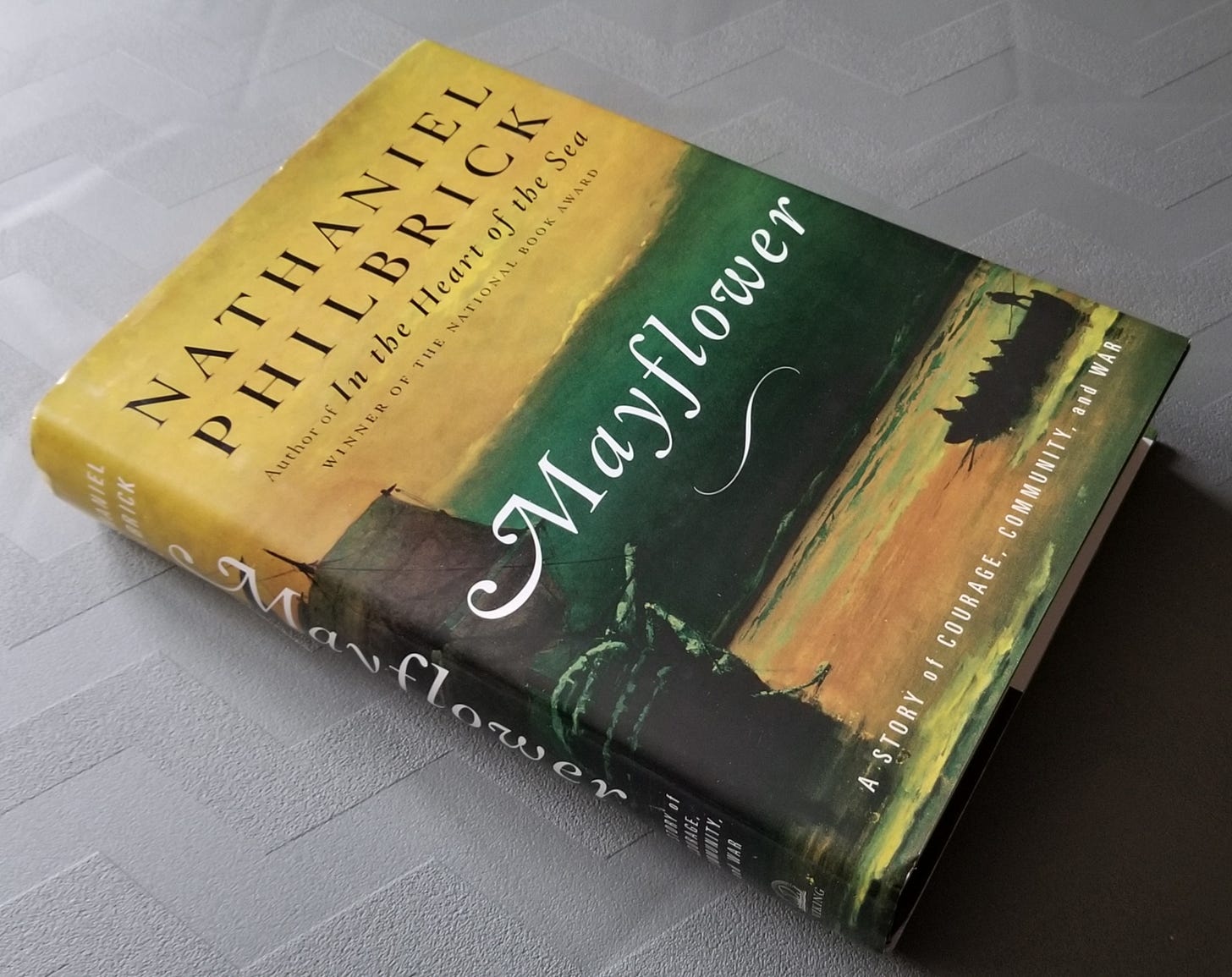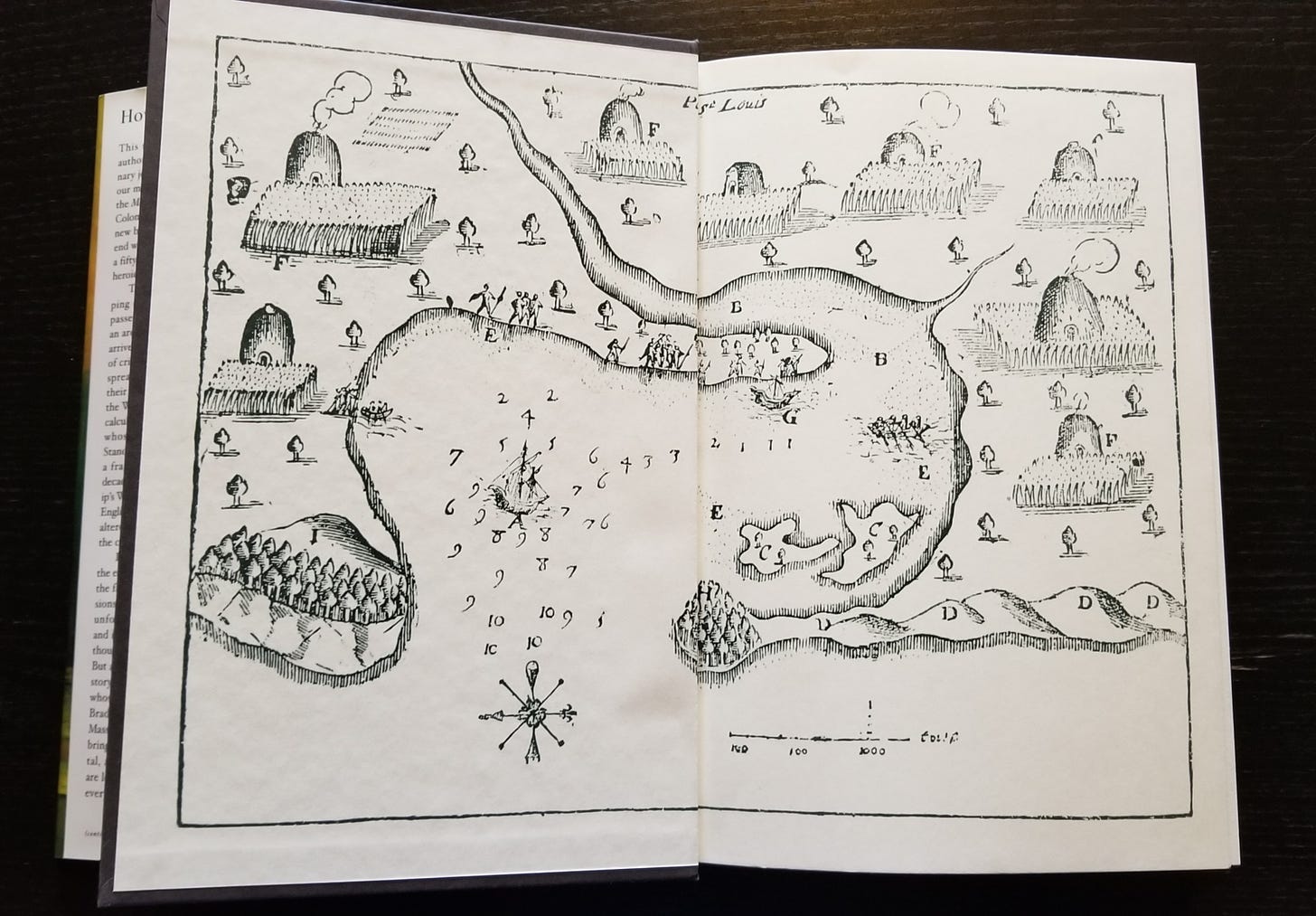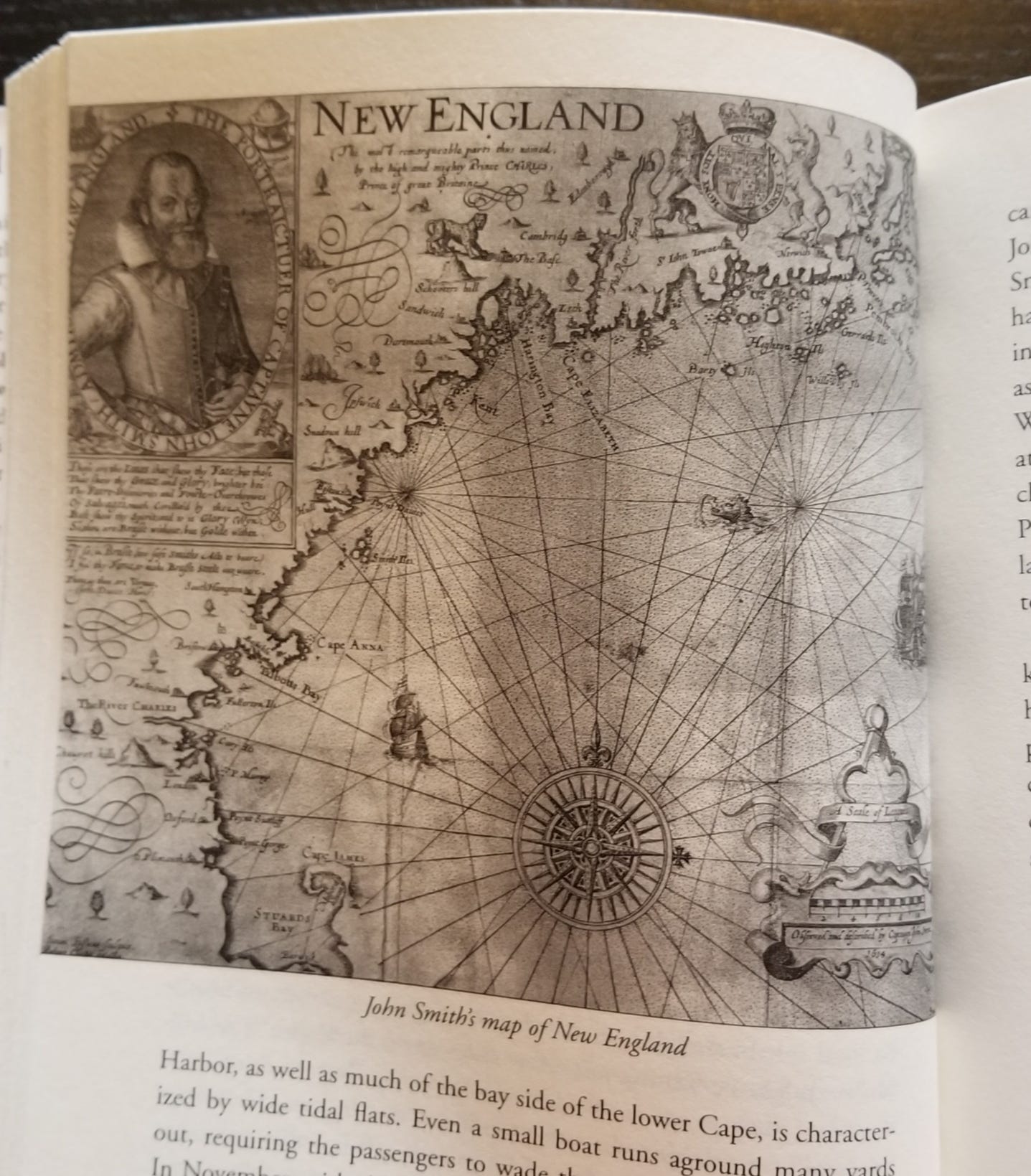Publication Date: May 9, 2006
Many of us have seen movies, TV shows, children’s books, and cartoons that depict what happened when Miles Standish, William Bradford, Squanto, Massasoit, and dozens of others gathered together for the first Thanksgiving. And from various movies over the years centering on the voyage of Mayflower, including one to help educate younger historians (The Mouse on the Mayflower), we’ve witnessed, thanks to Hollywood magic, the hardships the pilgrims faced in the year 1620. I thought I knew enough about this boat trip and subsequent Thanksgiving dinner until I cracked open Nathaniel Philbrick’s Mayflower, a 2007 Pulitzer Prize finalist.
Subtitled A STORY of COURAGE, COMMUNITY, and WAR, Mayflower opened my eyes to this era of history that heretofore was much unknown to me. It seems that Philbrick had the same mindset before he began his research on the book, as stated in his Preface.
We’ve all heard at least some version of the story: how in 1620 the Pilgrims sailed to the New World in search of religious freedom; how after drawing up the Mayflower Compact, they landed at Plymouth Rock and befriended the local Wampanoags, who taught them how to plant corn and whose leader or sachem, Massasoit, helped them celebrate the First Thanksgiving. From this inspiring inception came the United States.
Philbrick smartly uses the Preface to pull us in further if we aren’t convinced by now to march up to the checkout counter and purchase Mayflower.
But, as I have since discovered, the story of the Pilgrims does not end with the First Thanksgiving. When we look to how the Pilgrims and their children maintained more than fifty years of peace with the Wampanoags and how that peace suddenly erupted into one of the deadliest wars ever fought on American soil, the history of Plymouth Colony becomes something altogether new, rich, troubling, and complex. Instead of the story we already know, it becomes the story we need to know.
Sold! Over the last couple decades I’ve developed a fascination with American history that predates the American Revolution, and as concerns the Mayflower voyage and Plymouth Colony, this book is the crowning achievement—in my opinion—for those who yearn to learn more.
Philbrick made sure to bring this history to life by populating Mayflower with fascinating illustrations, maps, and pictures of artifacts, as seen in the examples below.
Mayflower is a fascinating look at a period of history I previously didn’t know as well as I thought I did. Before reading the book over a dozen years ago, I had never heard of King Philip’s War (1675-1678) and many of the events leading up to the first Thanksgiving. If you have any interest in this early epoch of North America, this book is for you. And maybe me, once again, as this is a book worth rereading.
In the spirit of giving, I’ve gifted you this trailer for The Mouse on the Mayflower. While the quality is lacking, there are several YouTube channels that have the entire animated film, if you should wish to bring back your childhood…or want to see it for the first time.
Happy Thanksgiving!
…and stay tuned for Page 22, coming soon!
From the excitement of buying shiny new comic books to collecting older issues for those nostalgic leanings of yesteryear, my weekly blog Cool Comics In My Collection showcases something for everyone at edgosney.com.







